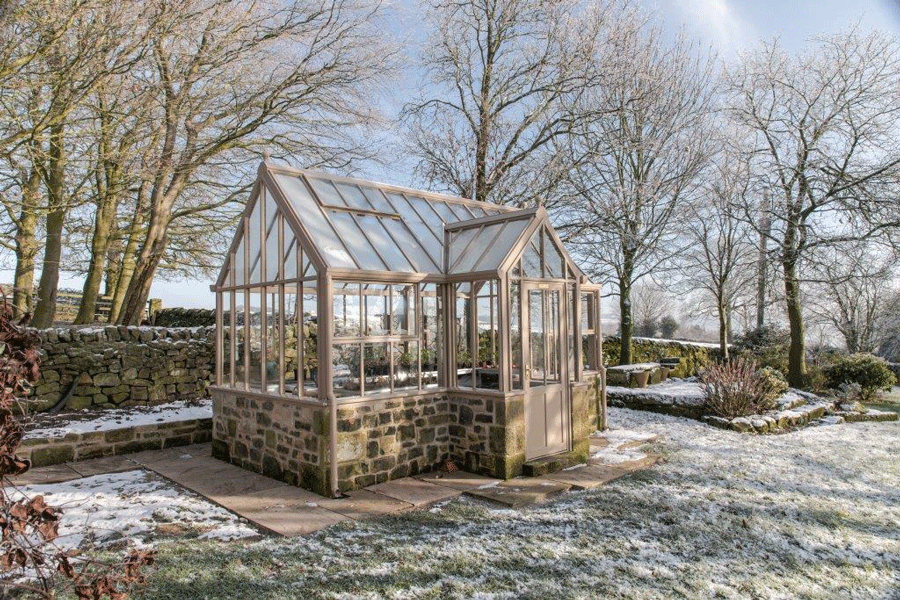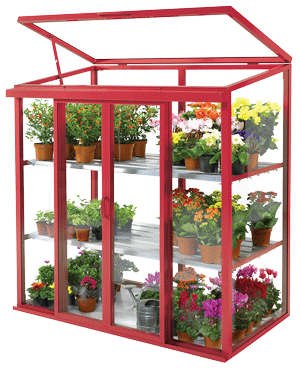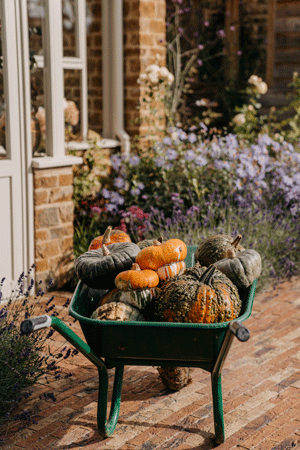Autumn in the Greenhouse
 As the weather gets colder, and after the abundance of spring and summer, it may feel that there is not much to do in your Greenhouse or Glasshouse. Our friends at Hartley Botanic, however, point out that the first months of autumn offer a useful window of preparation, so you can ensure you and your garden are prepared for whatever the winter weather holds.
As the weather gets colder, and after the abundance of spring and summer, it may feel that there is not much to do in your Greenhouse or Glasshouse. Our friends at Hartley Botanic, however, point out that the first months of autumn offer a useful window of preparation, so you can ensure you and your garden are prepared for whatever the winter weather holds.
Below is their advice for your early autumn gardening:
The end of September is the time to reduce watering as temperatures drop. It is also time to take semi-ripe cuttings from tender plants like pelargoniums and salvias for overwintering if you haven’t already done so. Ideally, they should be kept in a frost-free Glasshouse with divisions of chives, thyme, parsley lemon balm, mint and French tarragon; one of the benefits of a glasshouse is an extended cropping season. Indeed, most hardy herbs can be grown under cover through winter, so it’s worth potting extra for this purpose, growing under glass also makes the foliage softer and more aromatic.
Remove individual leaves around aubergines, tomatoes, peppers and cucumber and begin composting aubergines that have finished cropping to create more space in the Greenhouse, capturing more sunlight and improving air circulation around the plants that remain. Greenhouses can also produce many crops for eating fresh throughout autumn to early winter. The season for summer edibles: cucumbers, tomatoes, peppers and aubergines, can be extended for several weeks under cover.
Flowers and edibles during autumn and winter:
 One of the delights of having a Greenhouse is to produce out-of-season flowers. By providing extra warmth, plants which are normally dormant during early autumn and winter months can be ‘woken early’ and will look their best several months ahead of those grown naturally outdoors. Some, such as hyacinths, are often available as ‘prepared’ bulbs, i.e. they have been treated to simulate an artificial winter and will therefore spring into growth as soon as planted. Buy quality bulbs in autumn and plant closely in pots using peat-free potting compost and keep them in cool, deep shade under the Greenhouse bench until the leaves are 5cm long.
One of the delights of having a Greenhouse is to produce out-of-season flowers. By providing extra warmth, plants which are normally dormant during early autumn and winter months can be ‘woken early’ and will look their best several months ahead of those grown naturally outdoors. Some, such as hyacinths, are often available as ‘prepared’ bulbs, i.e. they have been treated to simulate an artificial winter and will therefore spring into growth as soon as planted. Buy quality bulbs in autumn and plant closely in pots using peat-free potting compost and keep them in cool, deep shade under the Greenhouse bench until the leaves are 5cm long.
Pick your plants with their flowering schedule in mind to keep blooms coming month after month. To get spring flowers as early as February and March, just pot up a few primulas and put them in your Greenhouse.
While it is still warm and sunny, sow trays, pots or old growing bags in your Greenhouse with ‘cut and come again’ crops which you can harvest throughout autumn and into winter. If you are looking for inspirational species ideas, try land cress, oriental salad leaves like pak choi, mizuna and mibuna. Or stick to classic lettuce varieties, like ‘Valdor’, chicory and radishes. You can also add brassica crops for microgreens which you can harvest earlier.
Autumn cleaning:
 Along with spring, autumn provides a natural opportunity to do some essential Greenhouse cleaning, keeping your most powerful gardening space looking beautiful and functioning efficiently. Aim to clean up both the inside and outside of your Greenhouse on a warm and dry autumn day.
Along with spring, autumn provides a natural opportunity to do some essential Greenhouse cleaning, keeping your most powerful gardening space looking beautiful and functioning efficiently. Aim to clean up both the inside and outside of your Greenhouse on a warm and dry autumn day.
Clean the windows of your Greenhouse, not forgetting to pay attention to the individual frames. You can remove moss from overlapping panes with an old kitchen knife or plant label. Check your gutters are clear of leaves and clean down pipes. Scoop leaves out with your hands, (wear gloves) and flush debris away with a hosepipe or watering can. Organic matter can be composted. Protecting and removing any delicate plants, clean the floor of your Greenhouse and disinfect all benches, shelving and equipment – this will help to control pests and diseases.
September is the ideal month for treating vine weevil. You should try to eradicate pests and diseases from tender plants before bringing them into the Greenhouse over winter.
Preparing for the cold
As the temperatures outside drop, so too do those inside the Greenhouse. Check your Greenhouse heater to make sure it’s working before the onset of cold weather. There are pros and cons to insulating the Greenhouse with bubble wrap in winter. If you do choose to do it, an important consideration is to maintain a balance between the amount of light, heat conservation and ventilation. Full insulation reduces the amount of light coming into the Greenhouse and increases humidity which can cause disease problems. To minimise this, be sure to remember to cut holes for the ventilators.
There are, however, alternative options. You can divide the Greenhouse into two halves, one with, and the other without insulation, dividing the spaces with a curtain of fleece or bubble wrap.
You can get all the latest tips and advice from Hartley’s experts here.
For information on the range of Hartley Greenhouses and Glasshouses please visit: www.hartley-botanic.co.uk
Image credits: ©Hartley Botanic.

